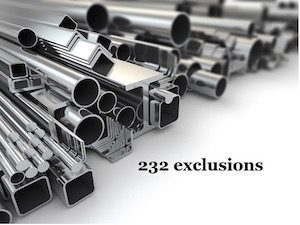By Paul Fudacz, Partner, Braumiller Law Group
The Grinch came early in 2020 with the introduction by the U.S. Department of Commerce of new steel licensing requirements that instruct importers to indicate the “country of melt and pour” on standard steel licenses imported after October 13, 2020, and also the introduction on December 14 of new certification requirements related to the Section 232 exclusion process. The new steel licensing requirements were advanced to address concerns related to the possible transshipment of steel products otherwise subject to section 232 safeguard tariffs through exempted countries like Canada and Mexico. The certification requirements were designed to prevent importers from overstating exclusion quantities in order to gain a commercial advantage or for arbitrage purposes.
However, these new requirements put many importers large and small in a bind if they were importing steel products from re-sellers or other upstream distributors where the specific country of melt and pour was not standard information on material certifications, or the information was otherwise unavailable. Furthermore, certain importers struggled with the new certification requirements, especially distributors who do not manufacture, process, or otherwise transform the imported products nor have a purchase order or order in hand for the products but rather maintain inventory in the U.S. in anticipation of future orders and base their inventory replenishment, and thus exclusion volume requests, on historical, rather than actual order activity.
However, in the same December 14, 2020 interim rule announcing the new certification requirements, Commerce addressed the need to create a more efficient method for approving exclusions where objections have not been received in the past for certain steel or aluminum articles by creating General Approved Exclusions (GAEs) that may be used by any importing entity. In addition, the products covered under the GAEs do not have quantity limits, however unlike standard Section 232 exclusions there is not retroactive relief associated GAEs.
This is a large departure from the previous section 232 exclusion requirements, unlike Section 301 exclusions, which can be used by any importer. Previously, Section 232 exclusions could only be used by the applicant, and suppliers were limited to those noted on the exclusion application. Also, of note, quantity limits proved to be a major issue for many importers and in many instances exclusion over-use occurred, either by underestimating the annual exclusion quantity, or by improperly allocating exclusions on entries where several products subject to individual exclusions were grouped together on Entry Summary lines. In certain instances, this has led to entry rejections by CBP (as well as numerous CF-28s and 29s), and in other cases the need to file PSC’s, and in some cases Prior Disclosures.
The products included under the GAEs are listed in two Supplements to the December 14 Notice, Supplement 2 covers steel products, and Supplement 3 covers aluminum products. In order to use a GAE, the importer must include the GAE identifier in the Automated Commercial Environment (ACE) system that corresponds to the steel / aluminum articles being imported. These GAEs are indefinite in length, unlike the one-year period of validity for standard 232 exclusions, but the Department of Commerce may at any time issue a Federal Register notice removing, revising, or adding to existing GAEs as warranted to align with the objectives of the 232 exclusions process. Also, the Department of Commerce may periodically publish notices of inquiry in the Federal Register soliciting public comments on potential removals, revisions, or additions to GAE listing.
Importers of steel products can review the December 14, 2020 Federal Register Notice here:
Importers are encouraged to review the Notice Supplements to identify possible coverage of products covered by existing exclusions, which will certainly simplify the exclusion process for products covered by the GAEs. However, prudent importers should periodically review the status of any GAE listing selected for use to capture any potential removals or revisions to the GAE listing, to avoid surprises or possible violations.



























